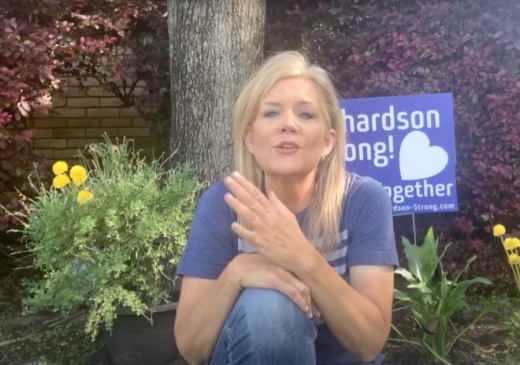Richardson ISD was tasked with teaching students from home when Gov. Greg Abbott called for the closure of campuses statewide in mid-March. RISD began online learning when students returned from spring break March 25.
“Every single one of our employees has had to adapt and change and grow and stretch,” Superintendent Jeannie Stone said.
Though the district has been navigating remote learning for over a month, it is still a work in progress, said Kristin Byno, assistant superintendent of teaching and learning services.
“I think everyone is kind of trying to adapt to it on a daily basis,” Byno said. “The community has really rallied around each other to support the district and support our teachers. So I think so far, it's been a very positive experience.”
The district has been working to ensure equity for all students, Byno said. RISD distributed Chromebooks and iPads to students in grades 2-12, as well as mobile hotspots those without a WiFi connection. Additionally, books are given out at meal pickup sites, Branum said.
The district has also recognized the need for other items students may not have at home, such as school supplies.
“Everyone is looking through that equity lens to make sure we're supporting those gaps,” she said.
It is too soon to tell the impact virtual learning has had on student performance, Branum said. Statewide assessments were suspended during at-home learning, making it difficult for the district to measure the effect.
“I don't think we [will be] able to quantify our student achievement or performance during this time until we return in the fall and we do some kind of beginning-of-the-year assessment,” Branum said.
The district is preparing to help students who may have fallen behind during the shutdown, Stone said. One of its priorities for the upcoming year is identifying students who need intervention to catch up, she said.
“That intervention really means taking every student where they are and then seeing what they need,” Stone said. “Any lost ground, we will need to do everything [we can] to make up that ground through additional efforts and resources.”
In case schools are unable to open in the fall, the district will continue to work on developing teacher proficiency in technology so that next semester will run smoother, Branum said. The district is considering providing devices for pre-K, kindergarten and first grade students, she added.
Officials are also looking into whether at-home learning has a permanent place in the district, Branum said. They recognize that some families who have students with medical conditions or those who have found their child performs better at home may not want to return to school, she said.
“We want to make sure that we are ready to stand up those resources for our parents who do have to make those decisions,” Branum said.





